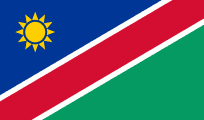Ramadan, the ninth month of the Islamic calendar, is a time of profound spiritual reflection, fasting, and community building. A cornerstone of this holy month is the exchange of Ramadan greetings, a tradition steeped in history that has gracefully transitioned from handwritten notes to the digital age, raising questions about the future of genuine connection. Let’s delve into this evolution.
From Ink to Pixels: A Historical Journey
Historically, Ramadan wishes were conveyed through heartfelt verbal exchanges and meticulously crafted handwritten notes. These personal touches fostered a sense of intimacy and strengthened community bonds. The act of physically writing a message demonstrated a level of care and dedication that resonated deeply. Common phrases like “Ramadan Mubarak” (Blessed Ramadan) and “Ramadan Kareem” (Generous Ramadan) echoed through neighborhoods and families, spreading positivity and goodwill.

As technology advanced, so did the methods of sharing these greetings. The advent of email and, subsequently, social media platforms revolutionized communication. Digital cards, images, and animated GIFs became increasingly popular, offering a convenient way to extend wishes to a broader audience. While these digital greetings lacked the tangible element of handwritten notes, they compensated with speed and accessibility, allowing individuals to connect with loved ones across geographical boundaries.
The Rise of Viral Messages and Social Media Trends
Today, social media is the dominant force in disseminating Ramadan greetings. Platforms like Facebook, Instagram, Twitter, and WhatsApp are flooded with Ramadan-themed content, ranging from professionally designed graphics to user-generated videos. Viral messages and trending hashtags amplify the reach of these greetings, creating a collective sense of celebration and unity.

However, this digital transformation also raises concerns about the authenticity of these greetings. The ease with which messages can be shared can sometimes overshadow the personal touch and sincerity that characterized traditional greetings. The challenge lies in maintaining the essence of Ramadan wishes in the digital realm, ensuring that they remain meaningful and heartfelt.
The Future of Connection: Balancing Technology and Tradition
Looking ahead, the future of Ramadan greetings will likely involve a blend of technology and tradition. While digital platforms will continue to play a vital role, there is a growing desire for more personalized and meaningful interactions. This could manifest in various ways:
- Personalized Digital Greetings: Utilizing technology to create custom-designed cards or video messages that reflect individual relationships.
- Virtual Iftars and Gatherings: Leveraging video conferencing to share meals and connect with loved ones remotely.
- Mindful Social Media Use: Being intentional about the messages we share and the connections we foster online.
- Acts of Service: Complementing digital greetings with tangible acts of kindness, such as volunteering or donating to charity.

Conclusion:
The evolution of Ramadan greetings reflects the broader changes in how we communicate and connect in the modern world. From handwritten notes to viral messages, the essence of these wishes remains the same: to extend blessings, strengthen community bonds, and promote positivity. By embracing technology mindfully and preserving the spirit of sincerity, we can ensure that Ramadan greetings continue to foster meaningful connections and spread goodwill for generations to come.
